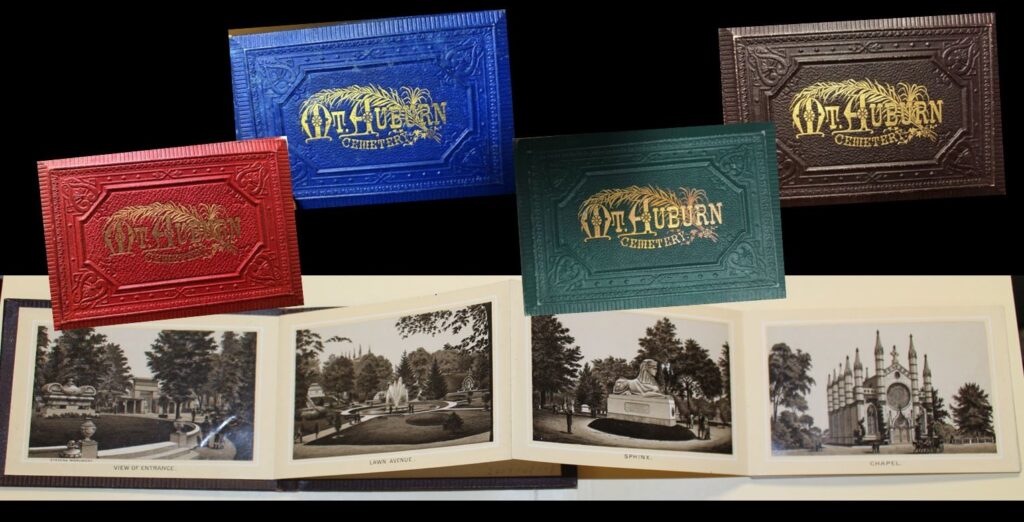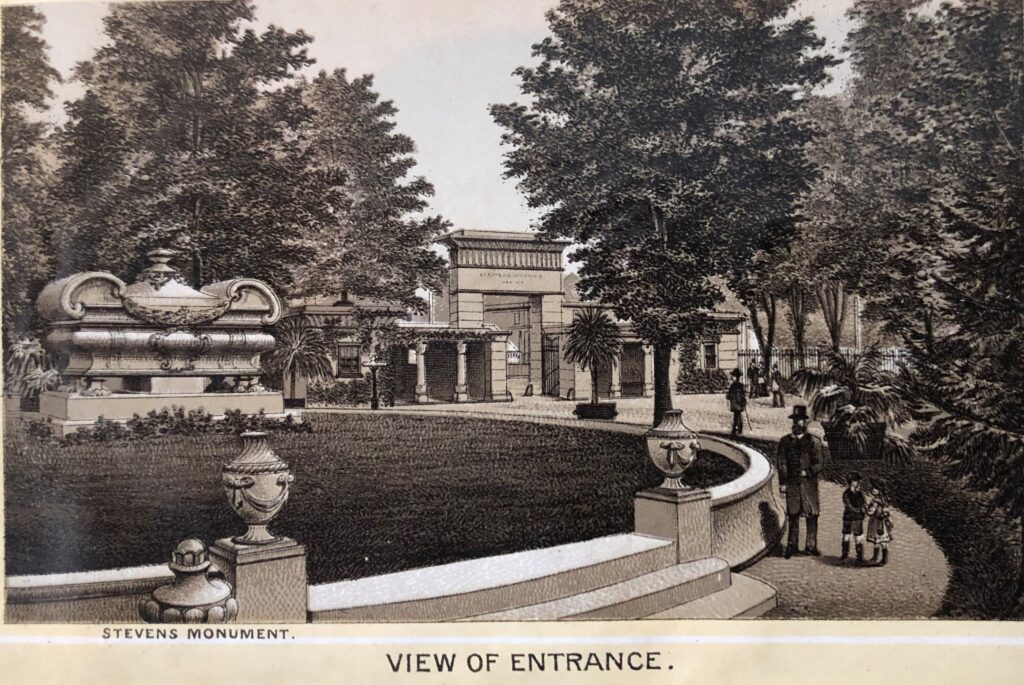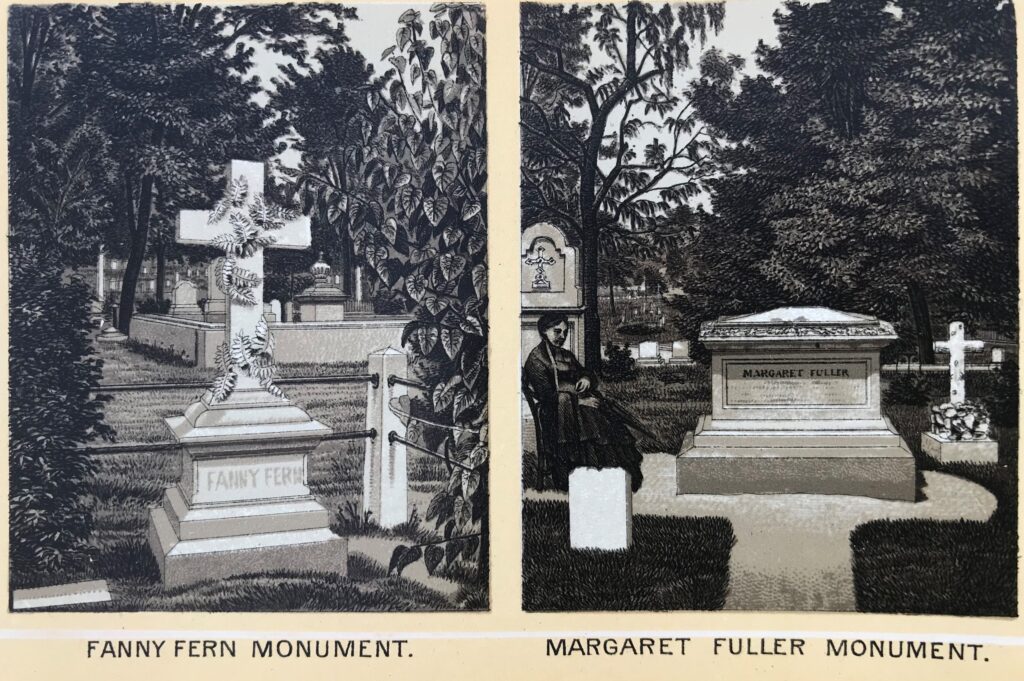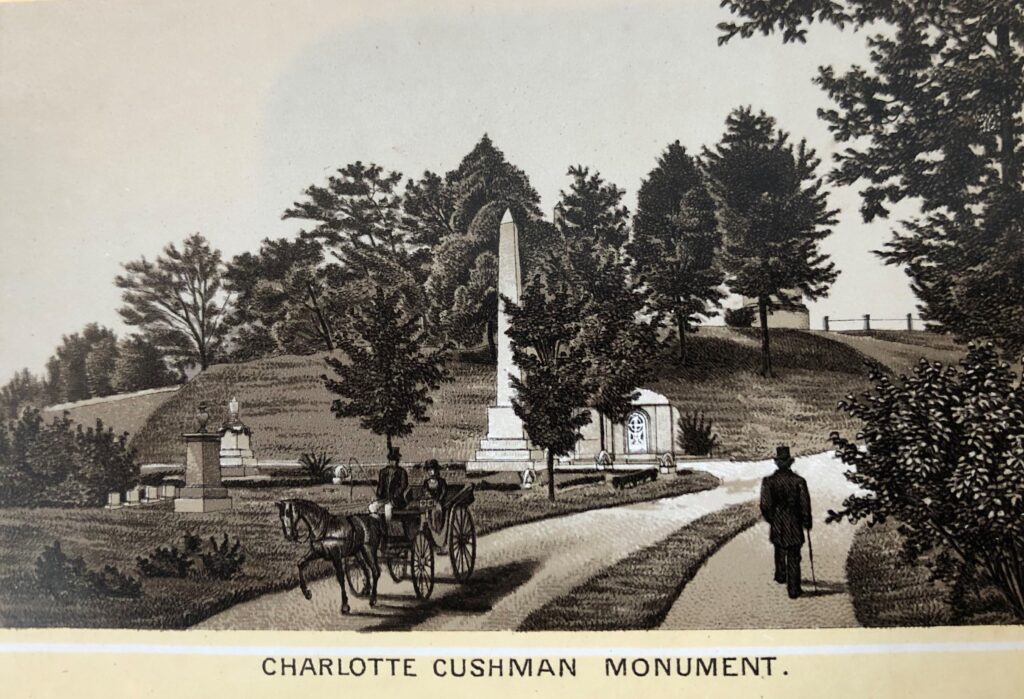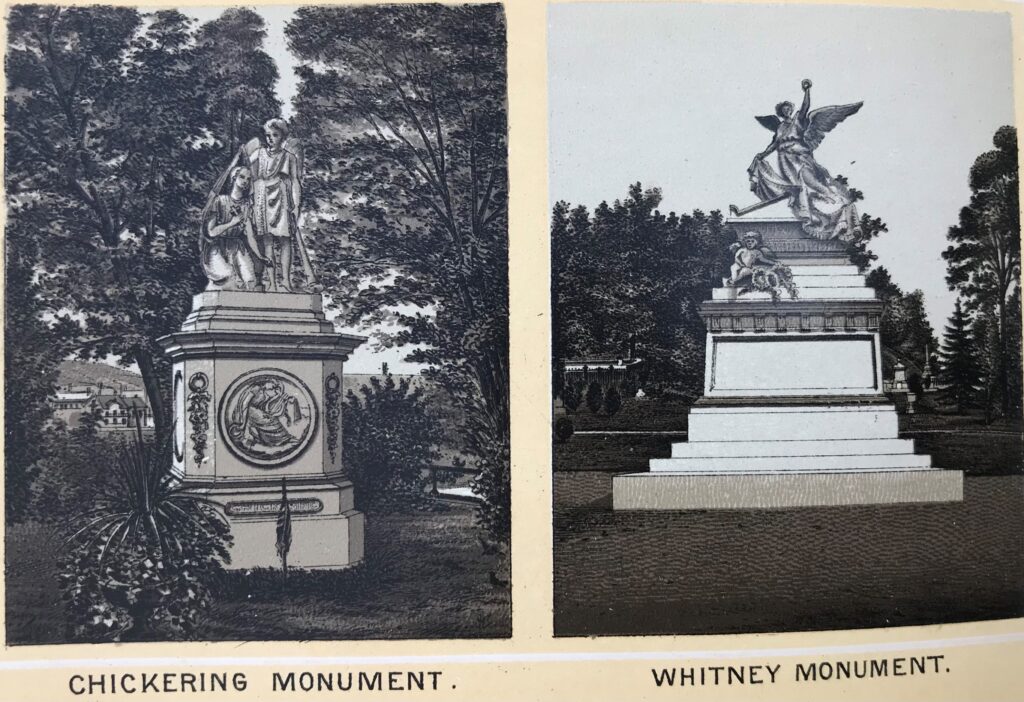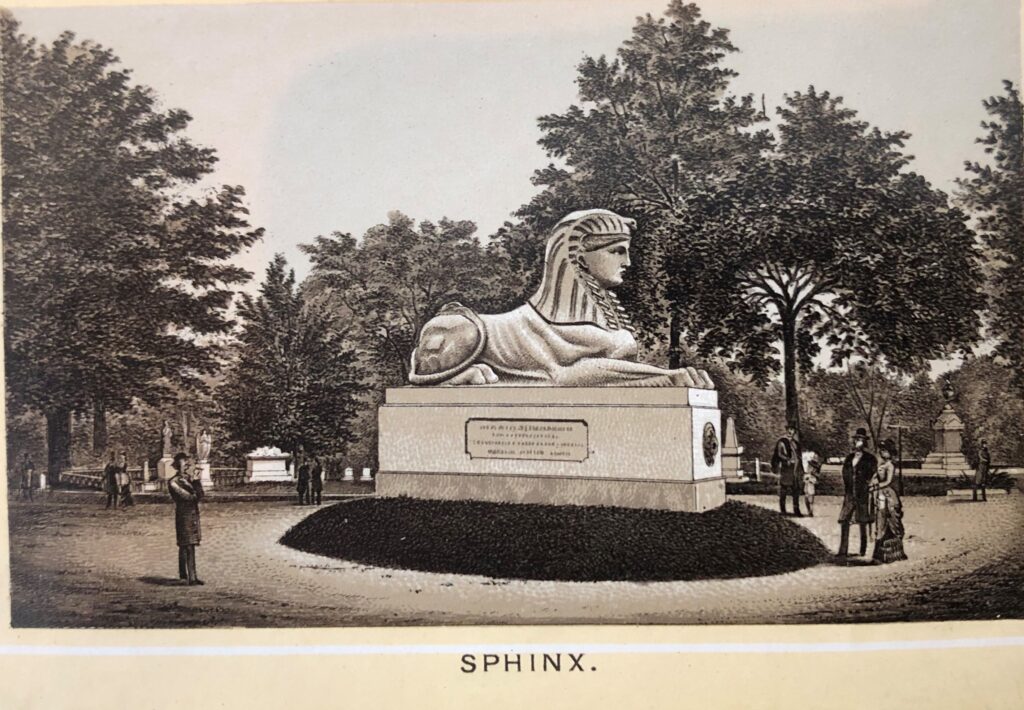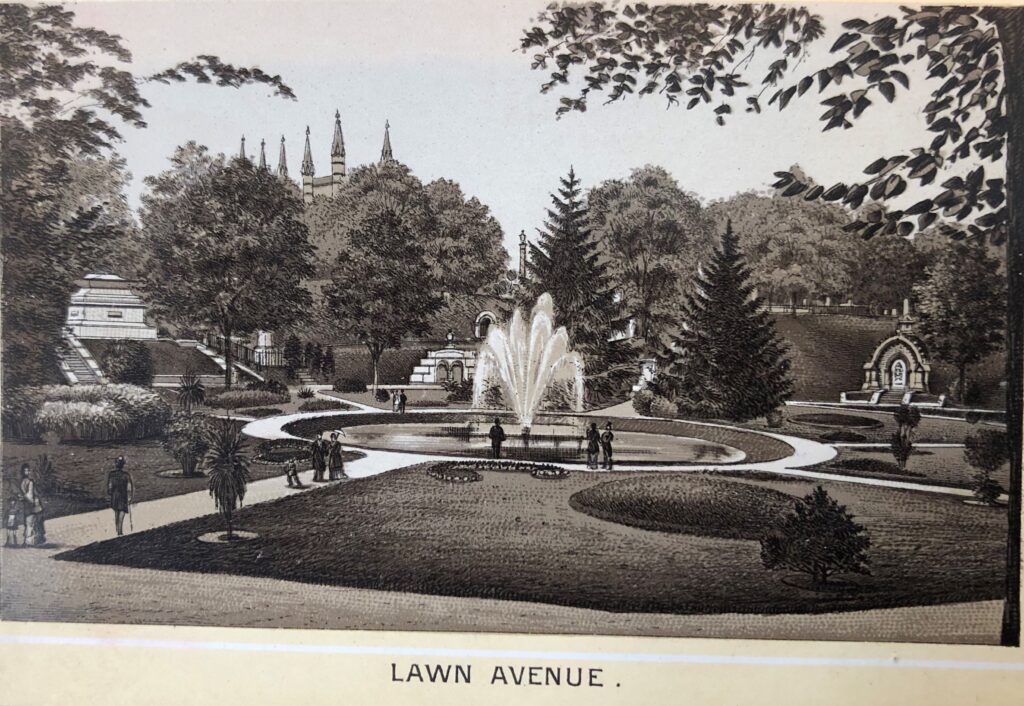Unfolding Views of Mount Auburn: Nineteenth-Century Souvenir Books

Among the many treasures in Mount Auburn’s Historical Collections & Archives are souvenir albums dating to the 1880s. Picturesque views of the Cemetery magically fan out from inside the accordion books. The colorful album covers, with tooled leather bindings and “Mt. Auburn” embossed in gold, add to the charming quality of these intimate keepsakes that can be held in the palm of one’s hand.[1]
Mount Auburn’s superintendent James W. Lovering collaborated with the Wittemann Brothers (Adolph and Herman), well-known publishers of lithographs and postcards, on the creation of the albums. They were described as containing “photo-views . . . reproduced from photographs by Louis Glaser’s process.” The illustrations, based on photographs, were printed in varying sepia-tone shades depending upon the amount of red, blue, or black added to the ink.
The Mount Auburn albums contain views selected by Lovering, who took care to oversee the quality of the production, requesting a “good” product and the correction of any misidentified monuments carried out “in a neat & workmanlike manner.”[2] In a letter to the Wittemann Brothers in June 1883, he noted, “I am now ready to complete the arrangement for an album of Mt. Auburn views, and have secured photographs of some of the monuments to which it is desired to show.”[3] Lovering chose to highlight the Cemetery’s architectural landmarks: the Egyptian Revival Gateway, Washington Tower, Bigelow Chapel, and memorials such as those to author Fanny Fern, journalist Margaret Fuller, and actress Charlotte Cushman.
Viewers could also enjoy examples of funerary art by American and European sculptors: the monument for piano manufacturer Jonas Chickering by Thomas Ball, the monument to industrialist Charles Whitney by Nicola Cantalamessa-Papotti, and the Sphinx civil war memorial by Martin Milmore.
Landscape scenes include the Lawn (now Asa Gray Garden), Consecration Dell, and Indian Ridge Path. Taken in the 1880s, the illustrations depict the era of ornamental garden design at Mount Auburn, which had evolved from the more rural naturalistic landscape of the 1830s. Visitors are seen strolling through the landscape among neatly defined paths, lawns, fountains, and plantings. The albums date to the emergence of the country’s public parks movement, which Mount Auburn itself helped to bring about.
The Witteman Brothers did a booming business publishing views of “all notable American scenery, summer resorts, cities, etc.” for the benefit of those who could travel to these destination points and those who could not. These hand-held keepsakes of Mount Auburn, acquired and shared with others, spread the word about the Cemetery, affirming it as a place of beauty, welcome, and commemoration. The enchanting souvenir books are equally evocative today, allowing us to imagine Mount Auburn as it appeared in the late nineteenth-century.
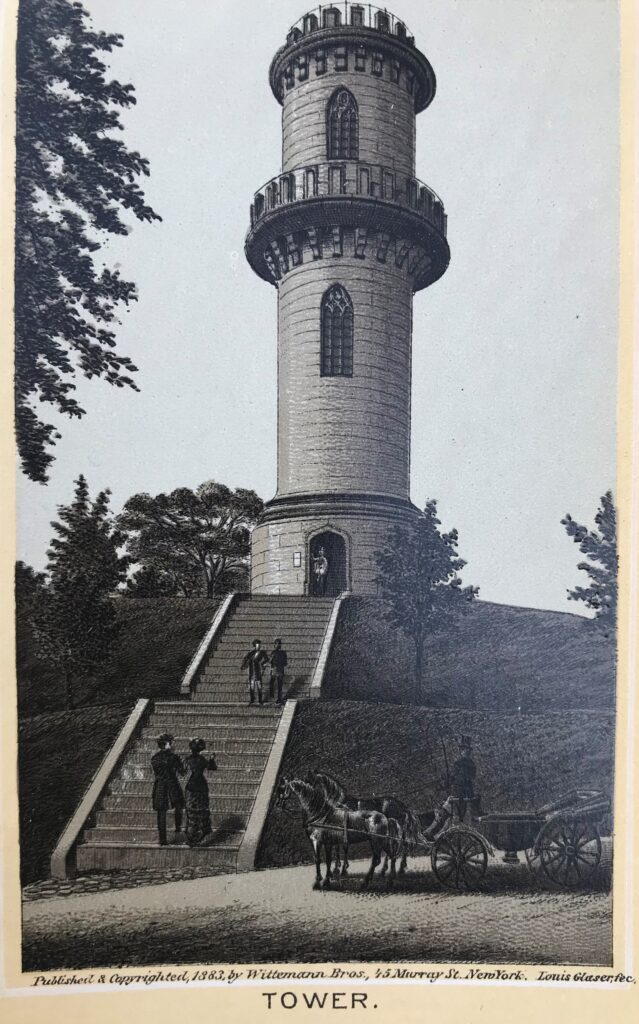
[1] The albums measure 5 x 3 ¼ inches.
[2] J. W. Lovering to Messrs Wittemann Bros., September 11, 1883 and December 20, 1883. Copying Book, Superintendent’s Letters, Jan. 27 1879 to July 10, 1884. 2005.060.008. See https://fromthepage.com/paged_search/wittemann-23789. Accessed 12/18/2023.
[3] J. W. Lovering to Messrs Wittemann Bros., June 21, 1883. Copying Book, Superintendent’s Letters, Jan. 27 1879 to July 10, 1884. 2005.060.008. See https://fromthepage.com/paged_search/wittemann-23789. Accessed 12/18/2023.
Comments are closed.
